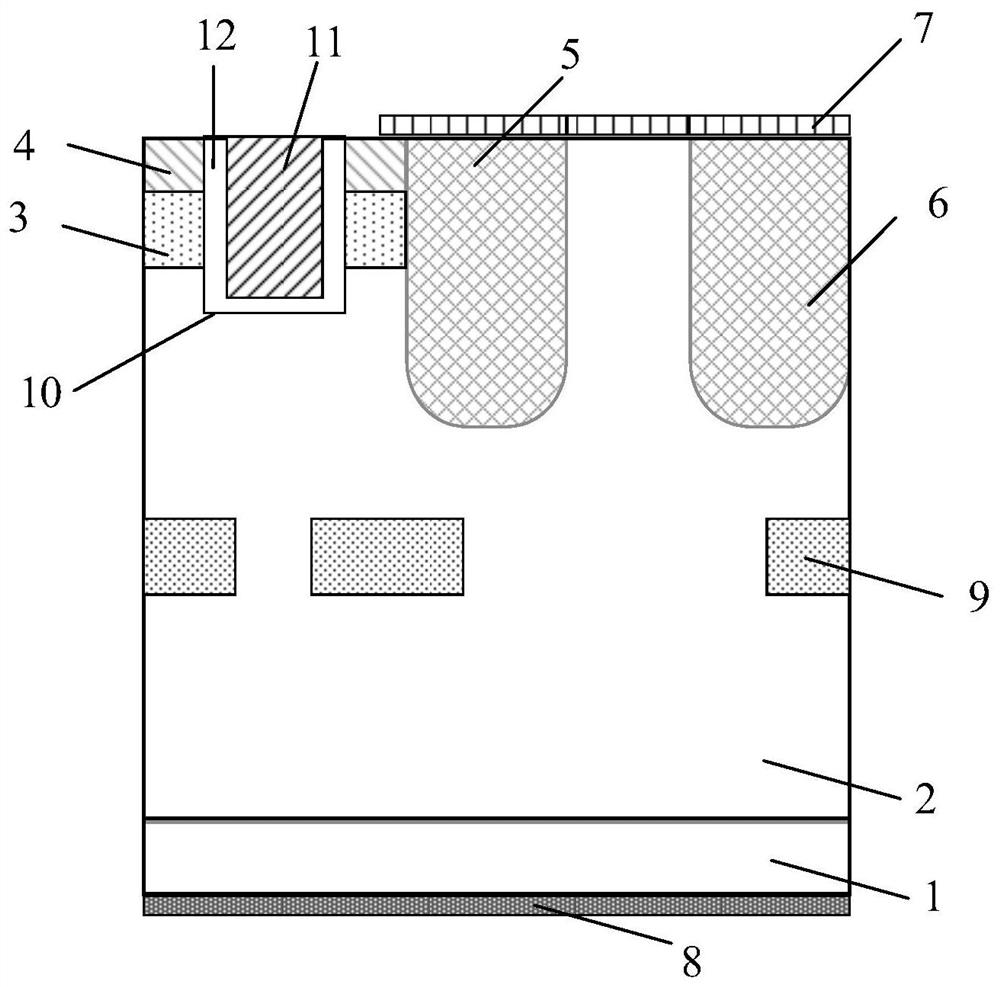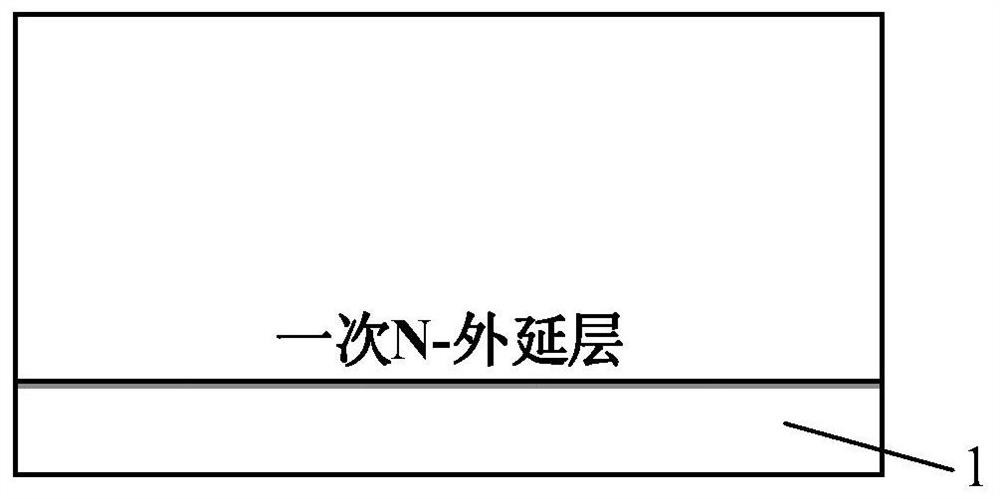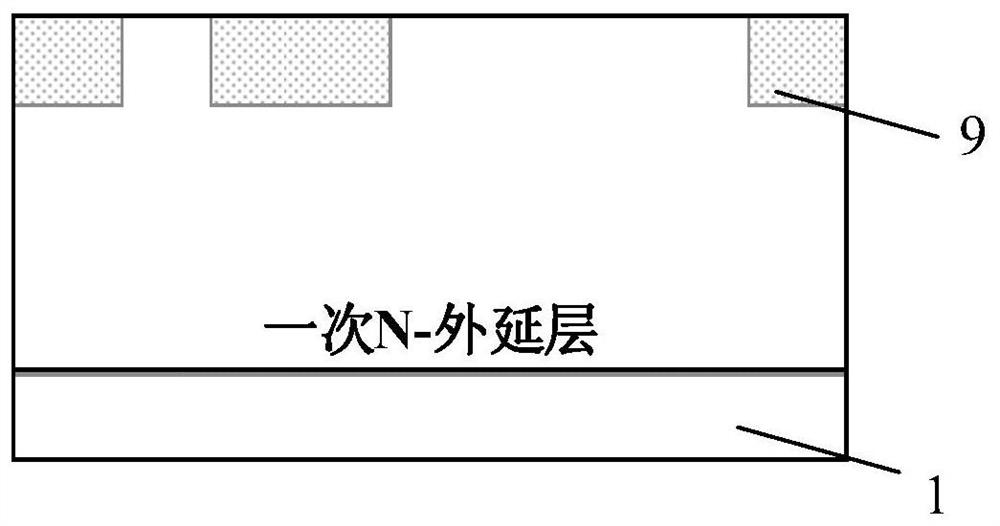Silicon carbide UMOSFET device integrated with SBD
A technology of silicon carbide and devices, which is applied in the direction of semiconductor devices, semiconductor/solid-state device manufacturing, electrical components, etc., can solve the problems of weak internal freewheeling ability of silicon carbide UMOSFET devices, incapable device freewheeling, and increased system area, etc., to achieve Improve the anti-avalanche ability, improve the reliability of gate oxide, and reduce the effect of cell area
- Summary
- Abstract
- Description
- Claims
- Application Information
AI Technical Summary
Problems solved by technology
Method used
Image
Examples
Embodiment 1
[0035] See figure 1 , figure 1 It is a schematic structural diagram of a silicon carbide UMOSFET device integrating SBD (Schottky Barrier Diode, Schottky diode) provided by an embodiment of the present invention. As shown in the figure, the silicon carbide UMOSFET device integrating SBD according to the embodiment of the present invention includes:
[0036] N+ substrate region 1;
[0037] The N- epitaxial region 2 is arranged on the N+ substrate region 1;
[0038] The P-well region 3 is located inside the N-epitaxial region 2;
[0039] The N+ implantation region 4 is arranged on the P-well region 3 and located inside the N-epitaxy region 2;
[0040] The gate is arranged inside the N-epitaxy region 2, the P-well region 3 and the N+ injection region 4;
[0041] The first P+ implantation region 5 is located inside the N- epitaxial region 2, and is adjacent to the P-well region 3 and the N+ implantation region 4, and the depth of the first P+ implantation region 5 is greater ...
Embodiment 2
[0060] See Figure 2a-Figure 2i , Figure 2a-Figure 2i It is a process schematic diagram of an integrated SBD silicon carbide UMOSFET device provided by an embodiment of the present invention, and the preparation method includes the following steps:
[0061] Step a: Form an N- epitaxial layer on the N+ substrate region 1 by means of epitaxial growth, such as Figure 2a shown.
[0062] First, the thickness is 350 μm, and the doping concentration is 5×10 18 cm -3 The SiC substrate was cleaned by RCA standard, and then epitaxially grown on the N+ substrate region 1 with a thickness of 4 μm and a doping concentration of 6×10 15 cm -3 of the primary N-epitaxial layer.
[0063] Step b: Perform ion implantation on the surface of the primary N- epitaxial layer to form several P+ ion implantation regions 9, such as Figure 2b shown.
[0064] With aluminum as a mask, selective Al ion implantation is performed on the primary N- epitaxial layer. The depth of each implanted region ...
PUM
| Property | Measurement | Unit |
|---|---|---|
| depth | aaaaa | aaaaa |
| width | aaaaa | aaaaa |
| thickness | aaaaa | aaaaa |
Abstract
Description
Claims
Application Information
 Login to View More
Login to View More - R&D
- Intellectual Property
- Life Sciences
- Materials
- Tech Scout
- Unparalleled Data Quality
- Higher Quality Content
- 60% Fewer Hallucinations
Browse by: Latest US Patents, China's latest patents, Technical Efficacy Thesaurus, Application Domain, Technology Topic, Popular Technical Reports.
© 2025 PatSnap. All rights reserved.Legal|Privacy policy|Modern Slavery Act Transparency Statement|Sitemap|About US| Contact US: help@patsnap.com



